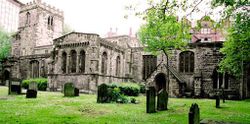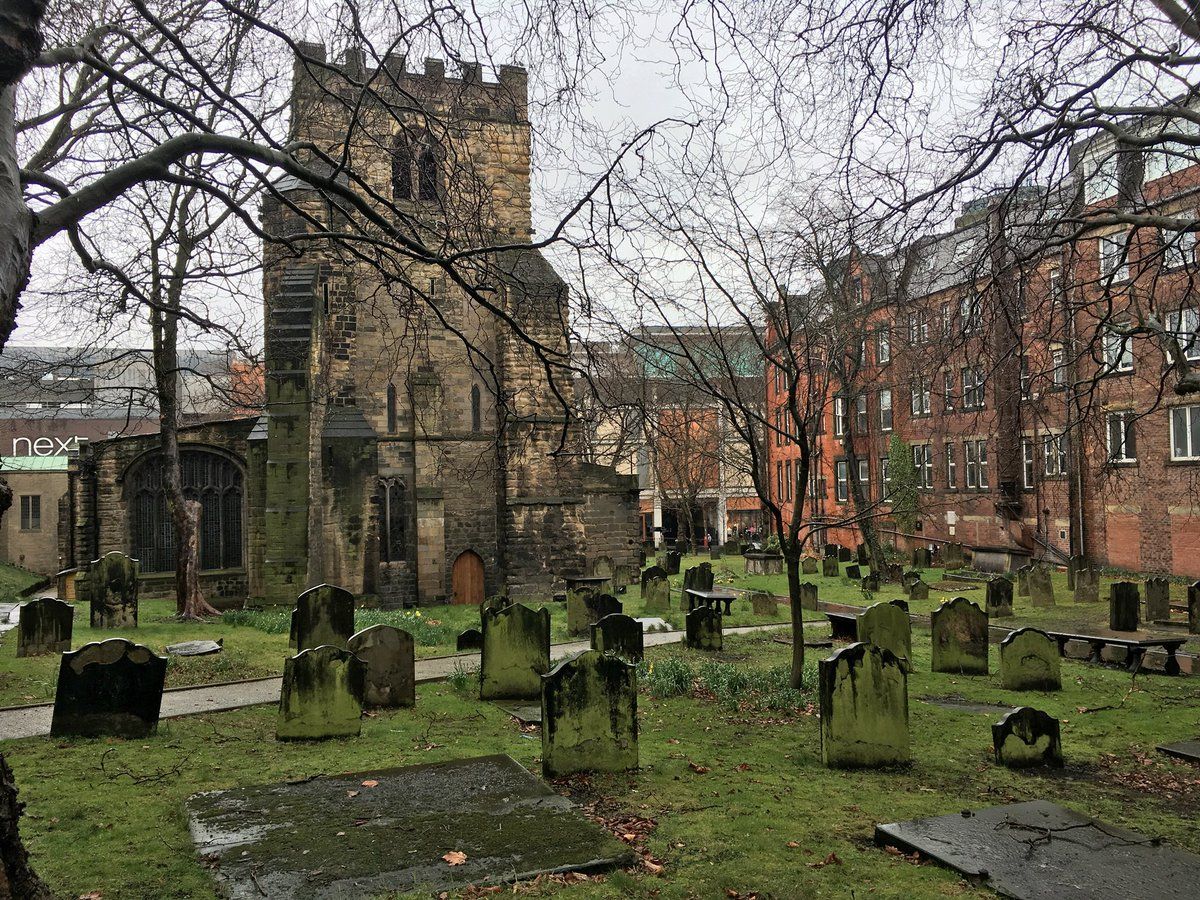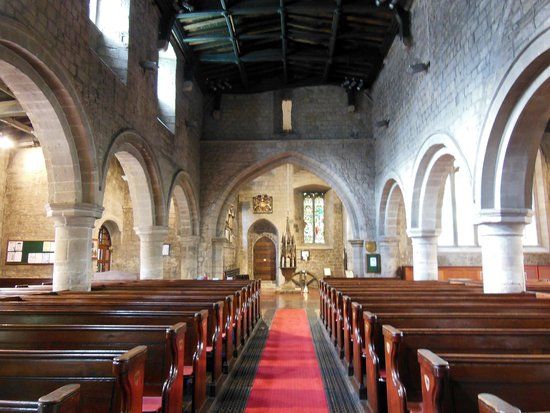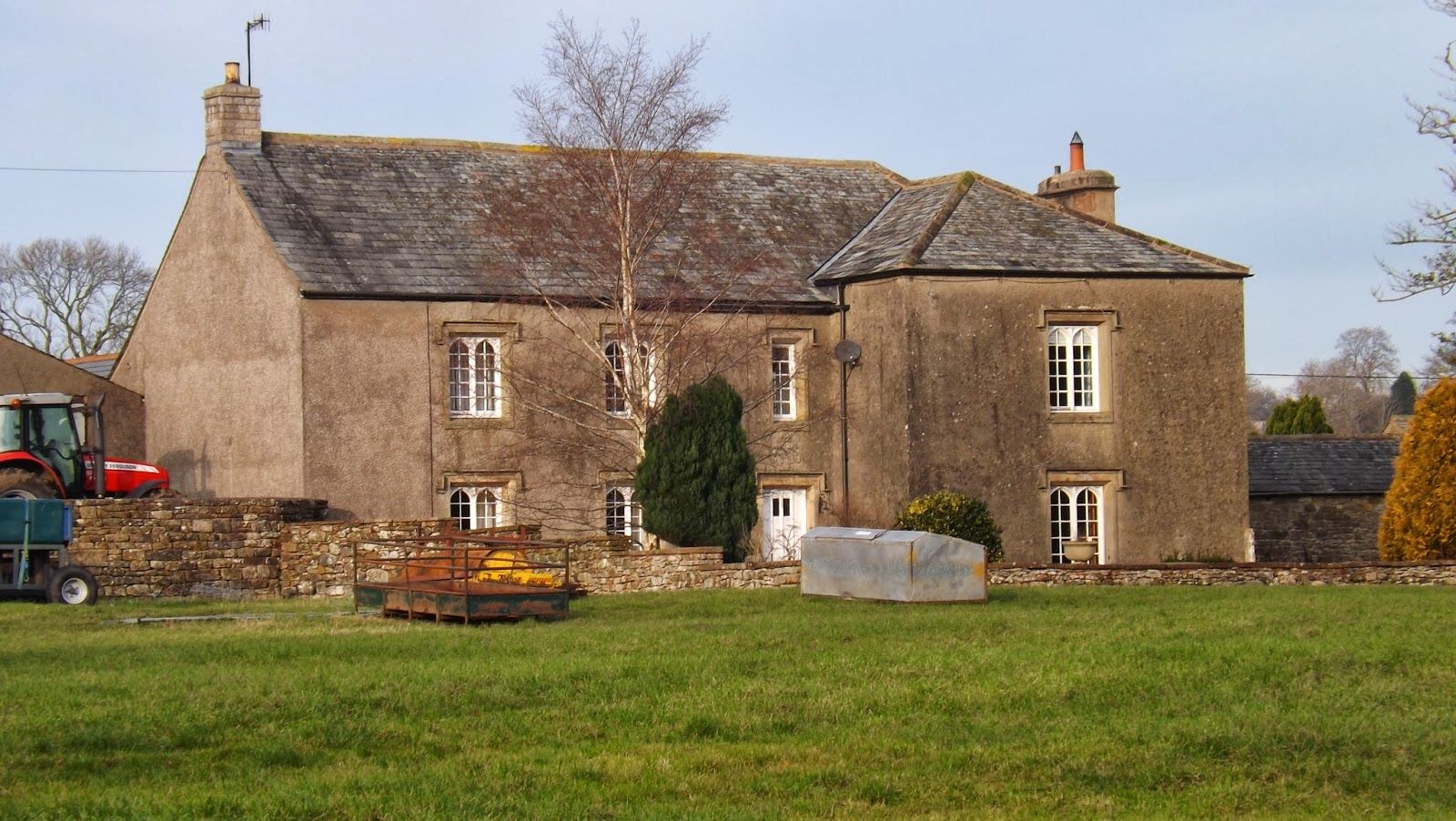Colonel John Addison, son of Lancelot Addison (1604-1703) and Dorothy (Danvers) Addison, was born in Westmoreland County, England, on the border of Scotland. He had three brothers. Thomas and Henry Addison were merchants; Anthony Addison was rector of Abingdon, Oxford, England, and Chaplain to the Duke of Marlborough.
John Addison emigrated from England in the early 1670's. On May 21, 1677, John Addison married Rebecca (Wilkinson) Dent, (daughter of the Reverend William Wilkinson, and widow of Thomas Dent). With the exception of her youngest child, Barbara, who was only an infant when her mother remarried, Rebecca's marriage to John Addison alienated the Dent children: William, Peter, George, Thomas, and Margaret Dent. There is no doubt that Colonel Addison profited from his marriage to the widow Dent and obtained a great deal of Thomas Dent's property. John and Rebecca had one child: Thomas.
John Addison established a powerful family in Prince George County politics. He was a merchant, Indian trader, and owned extensive land. He was also part owner of the ship "Liverpool Merchant", which was seized along with its cargo for violations of the navigation acts. Addison took a leading role in the Maryland Protestant Revolution of 1689. The Revolution lasted only a short time and ended in July, 1690. John Addison served as a member of the Associator's Convention (the Assembly elected under their regime) and the Grand Committee of Twenty (their executive committee). The goal of the Protestant Associators was the overthrow of the proprietary officers (Calverts). From 1690 to May 1692 there was an interim government of Protestant Associators. From1692 to 1715, Maryland was under crown rule (as King William and Queen Mary had declared it a royal colony) with Sir Lionel Copley as governor, thus ending Maryland's status as a proprietary province.
John's public career actually had begun earlier with a term as justice in Charles County from 1687 to 1692. But it gathered momentum when he was on the winning side in the struggle against the proprietary. He was named coroner of Charles County in 1691. The next year he served as justice on the Provincial Court, and in 1693 was a judge in the Court of Chancery. He was named associate chancellor in 1696, and associate commisary general 1699-1700.[18] He was said to have been Chancellor and Keeper of the Great Seal from 1696 to 1699.
As for his military career, John was appointed "Captain of the Foote" of Charles County in 1692, then later was appointed Captain of the Horse. From 30 July 1694 till his death in 1705 John was a Colonel in the militia, first in Charles County, then after Prince George's County was created he was put in command of its Militia on 17 August 1695.
John was an Anglican, as were his father and brothers. By the mid-nineteenth century the family could boast of six generations within the Anglican fold. In 1692 the Maryland legislature ended Maryland's freedom of religion and established the Church of England. On 3 October 1693 John, Thomas BROOKE, and five other men signed the test oath swearing they did not believe in transubstantiation. John served in the Piscattaway Parish Vestry from 1693 to 1705. Its first meeting was held in the Addison home. The men decided to purchase 78 acres, part of "Lisle Hall" at Broad Creek, and construct a church building there. They levied a poll tax of 40 pounds of tobacco on each adult, payable to John Addison and William Hutchinson to build the church. The so-called Broad Creek church, was more officially known as St. John's. John was the "leading spirit" of St. John's Parish, and his grandson was its "beloved rector" in later years. St John's Episcopal Church is the oldest church site in Prince George's County, and one of the "Original 30 Parishes". The General Assembly by the Act of June 2, 1692 in the colonial Province of Maryland established King George's Parish (also known as the "Parish of Piscataway") of the Church of England. The Parish name reflects the local Piscataway tribe. The local freeholders at Broad Creek then chose a "select" vestry and completed parish organization on January 20, 1693, authorizing Col. John Addison to purchase 78 acres of ground and obtain a contractor to build a church. The Parish at that time included a considerable portion of the future Episcopal Diocese of Washington, including all of the District of Columbia. It endured until 1726, when "Prince George's Parish" was established. Piscataway then became known as St. John's, although officially its title was "King George's Parish". Its first church at Broad Creek, begun in May 1695 of wood, and which was soon called the "Broad Creek Church". This original church was replaced in 1713 by a second wooden structure, and was in turn replaced by a third structure in 1723, which was enlarged between 1764-1768. The present brick building, is the fourth structure built on the same site, was completed in 1767-1768. The congregation still holds their weekly services in this building.
John Addison later returned to England to deal with his fathers estate after his death in 1703 leaving his wife and son in America. He died there and was buried in the family vault at St. Andrews. He passed on to his son, Thomas, his large estate acquired in England and America. His England estate inventory was valued at £1,840.0.1 sterling, and included fourteen slaves and one indentured servant, plus a balance of just under £1,000 sterling in the hands of London merchants. He owned 6,478.5 acres at the time of his death.
Colonel John Addison
Born: 1634 Crabstacke Manor, Crosby Ravensworth, Westmoreland, England
Died: Bet. November, 1705 and April, 1706. Crabstacke Manor, Crosby Ravensworth, Westmoreland, England
Father: Reverend Lancelot Addison
Mother: Jane Milner
Wed: 1678 Prince George's Co., Maryland
Wife: Rebecca Wilkinson Dent
Born: 1633 Lynnhaven Parish, Princess Anne Co., Virginia
Died: August 1726 Oxon Hill, Prince George's County, Maryland
Father: Reverend William Wilkinson
Mother: Naomi Hughes
Son: Colonel Thomas A. Addison b. 1679 Oxon Hill, Prince George's County, Maryland d. June 17, 1727 Oxon Hill, Prince George's County, Maryland
Colonel John Addison, son of Lancelot Addison (1604-1703) and Dorothy (Danvers) Addison, was born in Westmoreland County, England, on the border of Scotland. He had three brothers. Thomas and Henry Addison were merchants; Anthony Addison was rector of Abingdon, Oxford, England, and Chaplain to the Duke of Marlborough.
John Addison emigrated from England in the early 1670's. On May 21, 1677, John Addison married Rebecca (Wilkinson) Dent, (daughter of the Reverend William Wilkinson, and widow of Thomas Dent). With the exception of her youngest child, Barbara, who was only an infant when her mother remarried, Rebecca's marriage to John Addison alienated the Dent children: William, Peter, George, Thomas, and Margaret Dent. There is no doubt that Colonel Addison profited from his marriage to the widow Dent and obtained a great deal of Thomas Dent's property. John and Rebecca had one child: Thomas.
John Addison established a powerful family in Prince George County politics. He was a merchant, Indian trader, and owned extensive land. He was also part owner of the ship "Liverpool Merchant", which was seized along with its cargo for violations of the navigation acts. Addison took a leading role in the Maryland Protestant Revolution of 1689. The Revolution lasted only a short time and ended in July, 1690. John Addison served as a member of the Associator's Convention (the Assembly elected under their regime) and the Grand Committee of Twenty (their executive committee). The goal of the Protestant Associators was the overthrow of the proprietary officers (Calverts). From 1690 to May 1692 there was an interim government of Protestant Associators. From1692 to 1715, Maryland was under crown rule (as King William and Queen Mary had declared it a royal colony) with Sir Lionel Copley as governor, thus ending Maryland's status as a proprietary province.
John's public career actually had begun earlier with a term as justice in Charles County from 1687 to 1692. But it gathered momentum when he was on the winning side in the struggle against the proprietary. He was named coroner of Charles County in 1691. The next year he served as justice on the Provincial Court, and in 1693 was a judge in the Court of Chancery. He was named associate chancellor in 1696, and associate commisary general 1699-1700.[18] He was said to have been Chancellor and Keeper of the Great Seal from 1696 to 1699.
As for his military career, John was appointed "Captain of the Foote" of Charles County in 1692, then later was appointed Captain of the Horse. From 30 July 1694 till his death in 1705 John was a Colonel in the militia, first in Charles County, then after Prince George's County was created he was put in command of its Militia on 17 August 1695.
John was an Anglican, as were his father and brothers. By the mid-nineteenth century the family could boast of six generations within the Anglican fold. In 1692 the Maryland legislature ended Maryland's freedom of religion and established the Church of England. On 3 October 1693 John, Thomas BROOKE, and five other men signed the test oath swearing they did not believe in transubstantiation. John served in the Piscattaway Parish Vestry from 1693 to 1705. Its first meeting was held in the Addison home. The men decided to purchase 78 acres, part of "Lisle Hall" at Broad Creek, and construct a church building there. They levied a poll tax of 40 pounds of tobacco on each adult, payable to John Addison and William Hutchinson to build the church. The so-called Broad Creek church, was more officially known as St. John's. John was the "leading spirit" of St. John's Parish, and his grandson was its "beloved rector" in later years. St John's Episcopal Church is the oldest church site in Prince George's County, and one of the "Original 30 Parishes". The General Assembly by the Act of June 2, 1692 in the colonial Province of Maryland established King George's Parish (also known as the "Parish of Piscataway") of the Church of England. The Parish name reflects the local Piscataway tribe. The local freeholders at Broad Creek then chose a "select" vestry and completed parish organization on January 20, 1693, authorizing Col. John Addison to purchase 78 acres of ground and obtain a contractor to build a church. The Parish at that time included a considerable portion of the future Episcopal Diocese of Washington, including all of the District of Columbia. It endured until 1726, when "Prince George's Parish" was established. Piscataway then became known as St. John's, although officially its title was "King George's Parish". Its first church at Broad Creek, begun in May 1695 of wood, and which was soon called the "Broad Creek Church". This original church was replaced in 1713 by a second wooden structure, and was in turn replaced by a third structure in 1723, which was enlarged between 1764-1768. The present brick building, is the fourth structure built on the same site, was completed in 1767-1768. The congregation still holds their weekly services in this building.
John Addison later returned to England to deal with his fathers estate after his death in 1703 leaving his wife and son in America. He died there and was buried in the family vault at St. Andrews. He passed on to his son, Thomas, his large estate acquired in England and America. His England estate inventory was valued at £1,840.0.1 sterling, and included fourteen slaves and one indentured servant, plus a balance of just under £1,000 sterling in the hands of London merchants. He owned 6,478.5 acres at the time of his death.
Colonel John Addison
Born: 1634 Crabstacke Manor, Crosby Ravensworth, Westmoreland, England
Died: Bet. November, 1705 and April, 1706. Crabstacke Manor, Crosby Ravensworth, Westmoreland, England
Father: Reverend Lancelot Addison
Mother: Jane Milner
Wed: 1678 Prince George's Co., Maryland
Wife: Rebecca Wilkinson Dent
Born: 1633 Lynnhaven Parish, Princess Anne Co., Virginia
Died: August 1726 Oxon Hill, Prince George's County, Maryland
Father: Reverend William Wilkinson
Mother: Naomi Hughes
Son: Colonel Thomas A. Addison b. 1679 Oxon Hill, Prince George's County, Maryland d. June 17, 1727 Oxon Hill, Prince George's County, Maryland
Family Members
Advertisement
Advertisement







